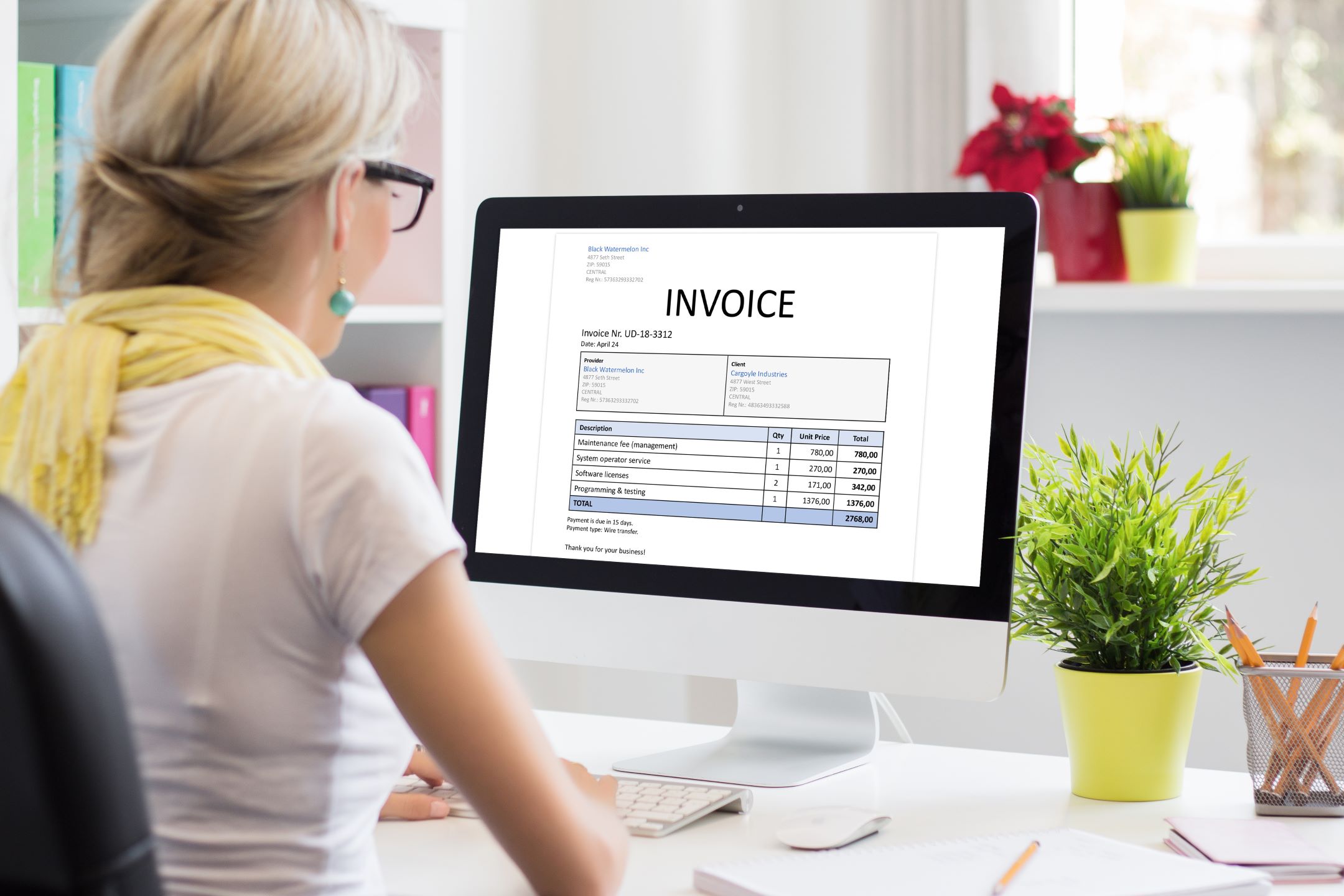Mastering Billing And Invoicing: A Comprehensive Guide For Designers
As a designer, you know the thrill of bringing ideas to life. But the business side, especially billing and invoicing, can be a real headache. They might not be as exciting as crafting the perfect logo, but they're crucial to keeping your design career afloat.
This guide will walk you through everything you need to know about billing and invoicing. Dig in to turn these tasks into a seamless aspect of your design business!
Structure Your Invoice
Invoices are your key to professional payment requests. They're detailed receipts for your work, listing what you've done and how much it costs. This makes it clear and easy for clients to understand your charges for every project milestone.
But invoices do more than request payment. They keep your finances organized and simplify your taxes. Plus, they help ensure you get paid on time.
Every good invoice includes:
- Your contact information
- Client details
- A breakdown of your work
- Payment details
- Invoice number
- Invoice date
Make sure your invoice looks professional. It shows that you take your work seriously and sets the right tone with clients. The good news is that there are many resources offering invoice templates to help you create professional invoices.
For instance, if you’re a home roofing designer, you can search for a free roofing invoice template online to kickstart your billing process. Using a template saves you time and ensures you don’t forget important details.
What’s even better, you can easily customize it to fit your brand and ongoing services. For example, you can add your logo, adjust colors, or include special notes about your eco-friendly roofing options.
Remember, a clear, well-structured invoice helps you get paid faster. It shows professionalism and makes it easy for clients to understand what they're paying for. Whether you're billing for a classic or rustic home design, a good invoice template sets you up for success.
Set Clear Billing Rates
Before you can bill clients, you need to determine your rates. This process requires careful consideration of several factors:
Experience And Expertise
Experience and expertise are fundamental factors in rate-setting. As designers gain more experience and develop specialized expertise, they can justifiably charge higher rates. This reflects the increased value they bring to projects due to their accumulated knowledge and skills.
Market Rates
Knowing what other designers are charging is essential for staying competitive. But even though this is an important benchmark, it shouldn't be the only determinant of your rates. Your unique skills and circumstances should also play a role.
Project Complexity
Project complexity acknowledges that not all design projects are equal. More complex projects that require advanced skills, extensive research, or innovative solutions should command higher rates.
Time Investments
Understanding the time required for different types of projects is essential for accurate pricing. This helps ensure that you're compensated fairly for your time and effort.
Overhead Costs
Including overhead costs in your rate calculations is crucial for maintaining profitability. Many new designers overlook these expenses, which can lead to underpricing their services.
Desired Income
This approach of working backwards from a desired annual income is an excellent strategy for ensuring your rates align with your financial goals. It helps designers think of their work as a business rather than just a creative pursuit.
Setting your billing rates is a dynamic process that requires careful consideration of multiple factors. By taking the above considerations into account, you'll be able to establish rates that reflect your actual value as a designer.
Creating A Clear Contract
Ever started a project only to have it go off the rails? A good contract can save you from that headache. It's not just paperwork - it's your project's roadmap.
Want to avoid misunderstandings? Your contract clarifies everything. It sets out the plan from start to finish. It spells out what you'll do, when you'll do it, and how much it'll cost. This helps you avoid any confusion or surprises that may come your way during the project.
Talking about money can be challenging, but your contract makes it simple. It states when and how much you'll get paid. Remember, a contract isn't about distrust. It's about setting you and your client up for success. It's the foundation for a trustworthy and happy working relationship.
Automate The Invoicing Process
Want to spend less time on paperwork and more on your creative work? Automate your invoice processing! Imagine having an invoicing software that creates and sends bills for you. No more late-night number crunching or forgotten invoices. With automation, your billing becomes a smooth, error-free process.
Got long-term clients? Set up recurring payments. Your invoices will go out quickly, keeping your cash flow steady.
Here's what invoice automation can do for you:
- Generate accurate bills
- Send invoices on time
- Track paid and unpaid invoices
- Remind clients about overdue payments
Invoice automation can free up time for you to focus on your business. Plus, your clients will appreciate the professional, consistent billing.
Maintain Clear Communication
Communication is crucial for mastering billing and invoicing. Before you begin work, discuss payment terms with your client. Be upfront about your rates and how you'll charge. This sets clear expectations from the start.
When you invoice, be specific. List each task and its cost. Include any extra expenses, like materials or software used. This transparency helps your clients understand what they're paying for.
Next, make the payment simple. Clearly state how your client can pay you. Note down all accepted payment methods. Whether it's bank transfer, online payment, or checks, give them options.
Clear communication isn't just courteous - it's smart business. It builds trust and prevents misunderstandings. Remember, a clear invoice often means faster payment. Take the time to make yours easy to understand.
Set And Adhere To Payment Terms
Set clear payment terms to keep your cash flow healthy. It's critical to running a smooth business. Choose when you want to receive payments. Many professionals use the "net-30" approach—payment is due 30 days after invoicing. But you can tailor this. Perhaps 14 days or even payment upon receipt works better.
Once you decide, stick to it. Clearly state your terms on every invoice, leaving no room for misunderstanding. For larger projects, consider milestone payments. This approach keeps money coming in regularly and shows your client clear progress.
Solid payment terms benefit both you and your clients. You'll maintain a steady income, while they'll appreciate knowing what to expect.
Use Cloud-Based Accounting Software
Accounting software is one of the essential tools you need for your design company. These digital helpers make billing a breeze, saving you time and hassle.
Imagine checking your finances from your phone while sipping coffee at your favorite café. No more lost data nightmares—your information is safely backed up in the cloud.
Electronic invoicing software plays nice with other apps you use, making your work life easier. Need to bill a client every month? Set it up once and forget about it. What about tracking expenses? It also becomes a breeze!
And if you're worried about traffic, these accounting systems are secure and protect your data. Cloud-based accounting systems use top-notch protection to keep your data safe. Plus, they're wallet-friendly. You pay as you go, so there are no significant upfront costs.
Offer Multiple Payment Options
Make it simple for clients to pay for your services. The more ways clients can pay, the faster you'll see that money in your account.
Mix up your payment methods. Start with the basics: bank transfers and credit cards. Then, add online options like popular payment apps. Some clients even prefer mobile payments right from their phones.
Got tech-savvy clients? Consider accepting digital currencies. It's not for everyone, but it could set you apart.
Note that flexibility is key. What works for one client might not suit another. The easier it is to pay, the quicker you'll receive the payment. By offering choices, you're making life easier for your clients and yourself.
Maintain Accurate Records
Good record-keeping is crucial for your business. It's pretty simple: track everything you spend and earn. Keep all receipts, no matter how small, and file bank statements and invoices.
Choose a system that works for you. It could be filling the cabinet or a digital app. The key is to use it consistently. Label everything clearly so you can find it later.
Also, check your accounts regularly. Compare your records with bank statements. Spot any odd charges? Deal with them right away.
And most importantly, remember about data backup. You can use the cloud but also keep a copy on your computer. Solid records help you make smart decisions. You'll see trends in your finances and be ready for tax time.
Track Time And Expenses
Keep tabs on your time and expenses. It's crucial for your work, regardless of how you bill.
Log your hours for each task to see where your time goes. Are you spending too long on sketches and less on the final touches? This information helps you set fair rates and boost your efficiency.
Clients appreciate transparency. With detailed records, you can show them what they're paying for. It builds trust and showcases your professionalism.
Don't overlook the small costs, either. Stock photos, prints, and supplies add up. Track them to ensure you're not losing money on projects.
By monitoring your time and expenses, you'll work smarter and bill more accurately. You'll understand your workflow better and grow your business
Final Thoughts
In the vibrant and dynamic field of design, where creativity meets commercial visibility, mastering the nuances of billing and invoicing is crucial. By following the above guide, you'll know how to streamline your billing and invoicing process. From crafting detailed invoices that reflect your professionalism to setting clear and effective payment terms, these best practices safeguard your cash flow. Remember, in the business of design, your financial understanding is as important as your creative prowess. Embrace these strategies to ensure your design career flourishes.



















